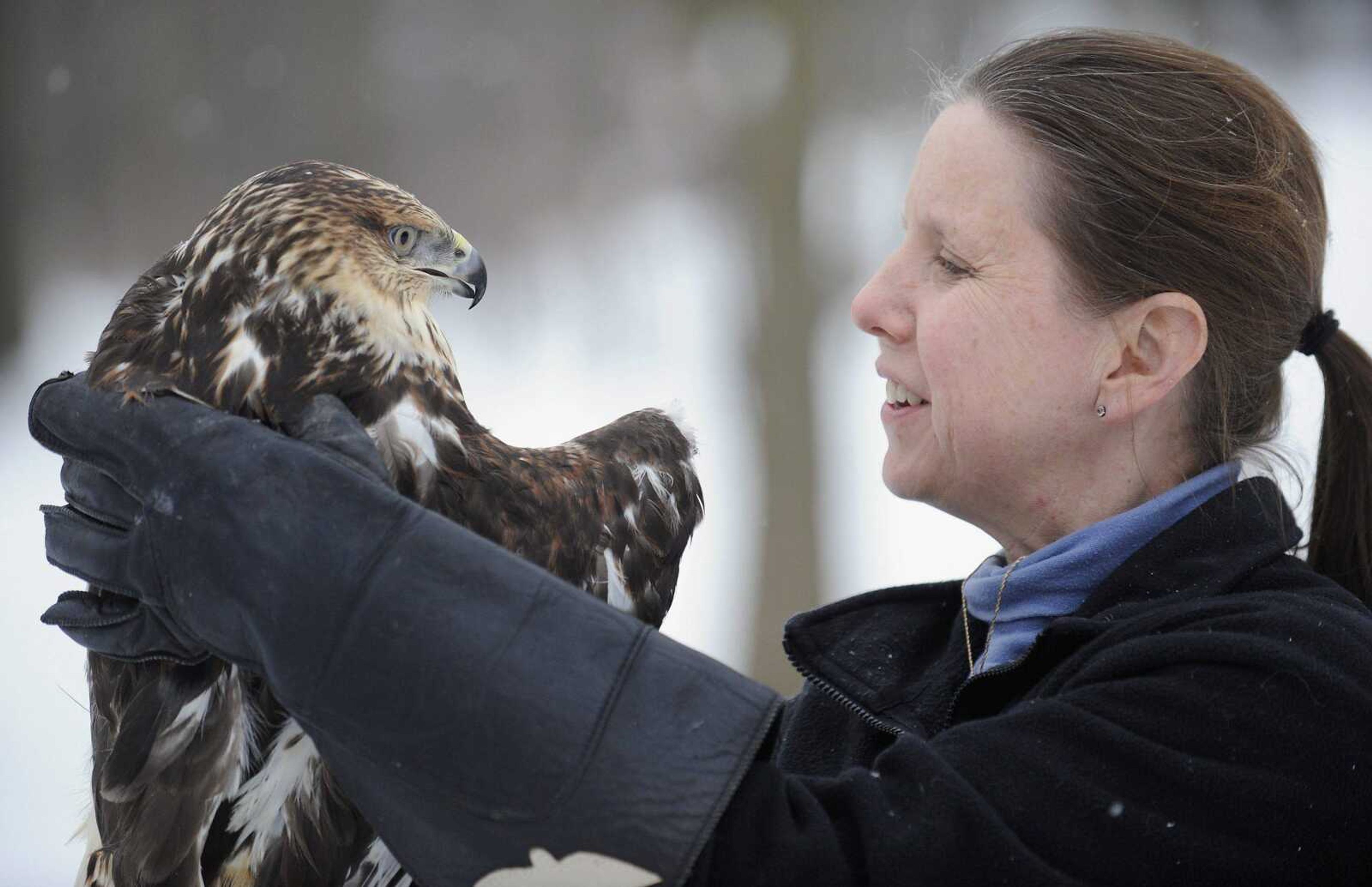Hawk hit and snagged by train, then nursed back to health
CHICAGO -- This bird went south for the winter the hard way. A Ferruginous hawk was apparently struck by a train in western Canada -- and then got stuck in the train's front plow for 1,000 to 2,000 miles. It was finally discovered when the Canadian Pacific Railway train pulled into a train yard in Franklin Park...
CHICAGO -- This bird went south for the winter the hard way.
A Ferruginous hawk was apparently struck by a train in western Canada -- and then got stuck in the train's front plow for 1,000 to 2,000 miles.
It was finally discovered when the Canadian Pacific Railway train pulled into a train yard in Franklin Park.
"It's absolutely amazing that he lived through it," said Dawn Keller, founder of Flint Creek Wildlife Rehabilitation, which operates rescue centers at Northerly Island, Itasca and Barrington.
Keller was called by a railroad worker after 11 p.m. one night last summer to rescue the bird.
Keller said she found the bird contorted like a pretzel and stuck between two pieces of metal. Keller said she didn't think it was alive, but when she touched its tail feather, it moved.
The bird was trapped in a space so tight that Keller couldn't get a gloved hand in there.
"It was crazy. I didn't think we were going to get him out. I had to reach in bare-handed, push his head down, then go in a second time to get his left wing out," she said.
The bird bit her -- but didn't snag her with its talons, which would have really hurt, she said.
She took the hawk to her Itasca facility. It was only after she got a good look at it in the light that she realized she had a bird with rust-colored feathers and an oversize jaw that wasn't like any she'd cared for before.
"I thought we had a red-tailed hawk, then I was like, 'Oh my gosh!'" Keller said. She did some research and determined it was a Ferruginous hawk. They spend winters in the western United States and Canada and summers as far south as central Mexico. The largest hawk in North America, it's considered "at risk" by Canadian authorities and endangered or threatened in several states.
Based on the bird's range and the train's path, Keller determined he was probably struck in Alberta or Saskatchewan.
How did he get hit?
"They are completely focused on prey. They are in pursuit of dinner, and that's why they make a mistake, and fly in front of a plane or car or train going after a rabbit."
At first, he struggled to survive.
"He had major head trauma and a dislocated elbow," Keller said.
He was put in an incubator and was given around-the-clock care. His wing was wrapped while it healed, but he eventually was moved to a normal cage. He is now doing much better and being fed a diet of dead mice and rats. But he won't be able to fly again.
The bird, which Keller believes is less than a year old, weighs 3.5 pounds and has a 4.5-foot wingspan.
Because he can't be released back into the wild, the center plans to apply for a federal permit to keep the hawk for education purposes. That means he could soon show up at Chicago area schools or be displayed at Polar Adventure Days at Northerly Island -- if not by Jan. 23, then most likely by Feb. 20, Keller said.
Keller predicts the bird -- now named Journey -- will be a popular attraction.
"This is not a species that is normally ever in Illinois," she said.
Connect with the Southeast Missourian Newsroom:
For corrections to this story or other insights for the editor, click here. To submit a letter to the editor, click here. To learn about the Southeast Missourian’s AI Policy, click here.










